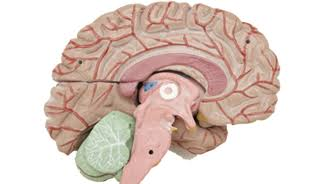A protein involved in cognition and storing long-term memories looks and acts like a protein from viruses. The protein, called Arc, has properties similar to those that viruses use for infecting host cells, and originated from a chance evolutionary event that occurred hundreds of millions of years ago.
The prospect that virus-like proteins could be the basis for a novel form of cell-to-cell communication in the brain could change our understanding of how memories are made, according to Jason Shepherd, Ph.D., a neuroscientist at University of Utah Health.
Researchers suspected that something was different about Arc when his colleagues captured an image of the protein showing that Arc was assembling into large structures. With a shape that resembles a capsule from a lunar lander, these structures looked a lot like the retrovirus, HIV. Prior work had shown that mice lacking Arc forgot things they had learned a mere 24 hours earlier. Further, their brains lacked plasticity.
There is a window of time early in life when the brain is like a sponge, easily soaking up new knowledge and skills. Without Arc, the window never opens. Scientists had never considered that mechanisms responsible for acquiring knowledge could stem from foreign origins. A protein important for cognition and memory named Arc can encapsulates genetic material (polyhedron enveloping the ribbon-like strands) and delivers it to brain cells in a manner similar to the way in which viruses infect host cells.
Seeing Arc’s unusual propensity to form virus-like structures prompted researchers to scrutinize the protein sequence with a new set of eyes. They found that regions of the code were similar to that from viral capsids. An essential tool for viral infection, capsids carry virus’ genetic information and deliver it from cell to cell in its victim.
Given that Arc looks like a viral protein, Shepherd and his colleagues designed a set of experiments to test whether it also acts like one. They first determined that several copies of Arc self-assemble into hollow virus-like capsids and stash its own genetic material, in this case mRNA, inside them. When the scientists added the capsids to mouse brain cells, or neurons, growing in a dish, Arc transferred its genetic cargo into the cells.
After viruses invade host cells, they emerge ready to infect once again. It appears that Arc works in a similar way. The scientists gathered Arc that had been released from mouse neurons and determined that the proteins and their cargo could be taken up by another set of neurons. Unlike for viruses, activating neurons mobilizes Arc, triggering the release of capsids.
A protein involved in cognition and storing long-term memories looks and acts like a protein from viruses, according to research by scientists at University of Utah Health. The protein, called Arc, has properties similar to those that viruses use for infecting host cells and could be the basis for a novel form of communication in the brain. An ancestor to retroviruses, called retrotransposons, inserted its genetic material into the animals’ DNA, the event led to the mammalian. The significance of such an event is hinted at by the fact that it happened more than once.
haleplushearty.blogspot.com


